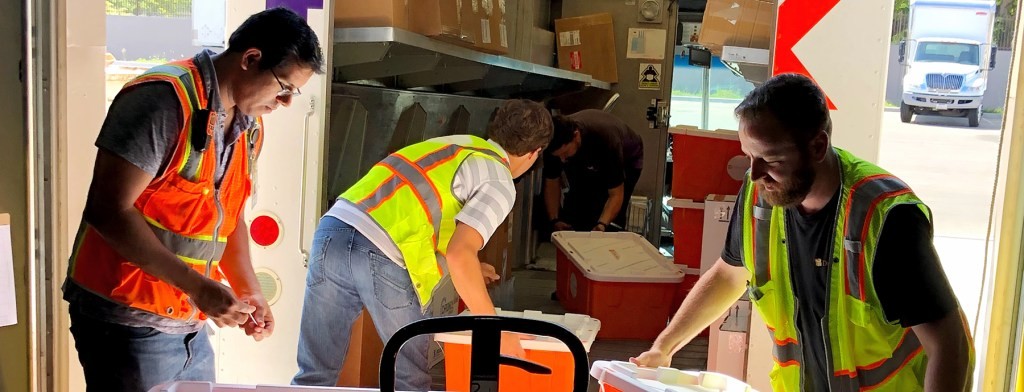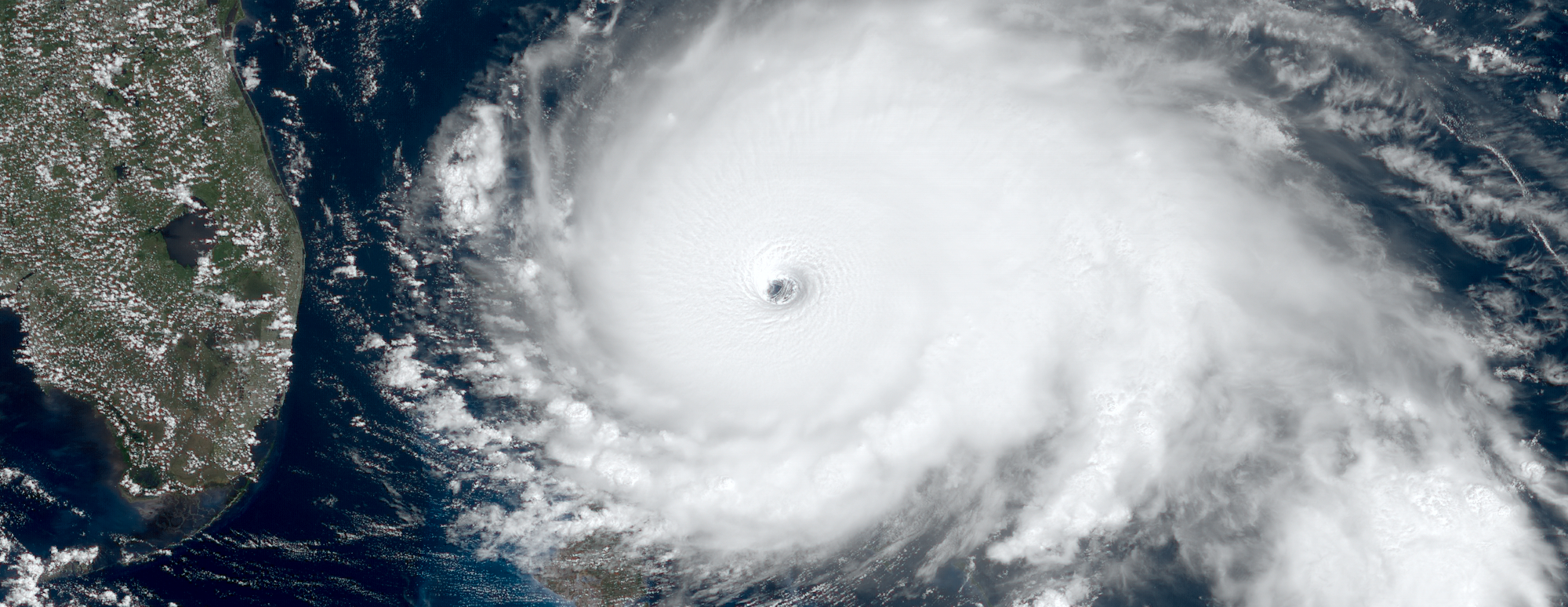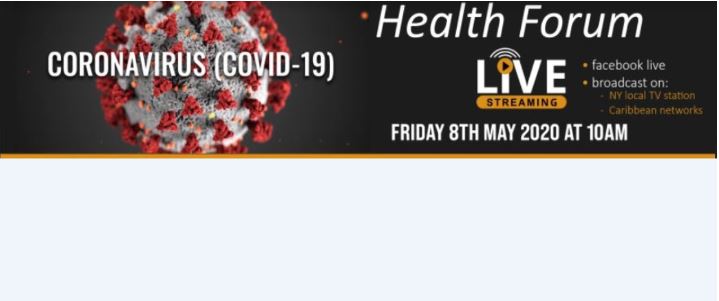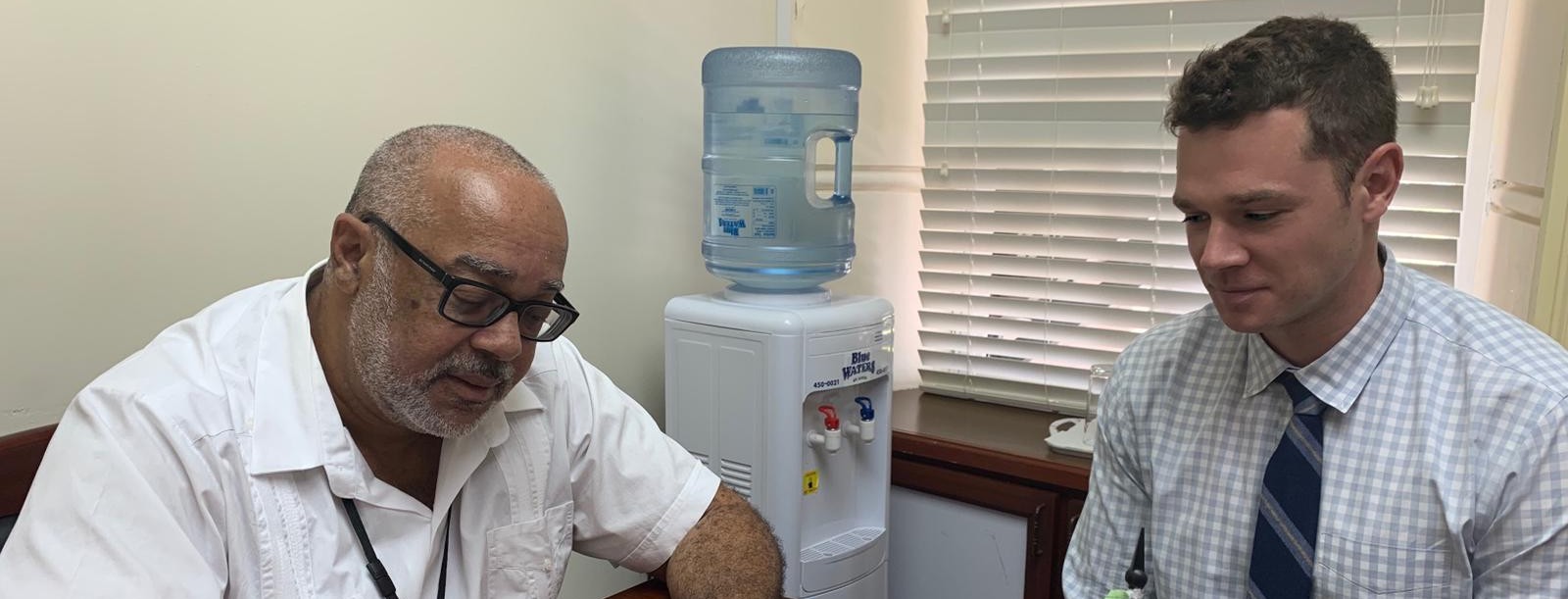One of the first medical aid shipments delivered by boat to the Abaco Islands arrived today and was put to immediate use by the medical team it accompanied. It was not an easy trip.

A communications blackout and pervasive flooding have impeded the flow of aid and support to the Abaco Islands since Hurricane Dorian pummeled the Bahamas over the weekend.
For Direct Relief’s Luis David Rodriguez, overcoming these challenges has meant shepherding a Hurricane Prep Pack — filled with about 150 items — from his home in Puerto Rico to Tampa, then catching a charter flight, that had a “gnarly landing,” into Nassau. From there, he tried to snag a spot on a rumored superyacht (which never materialized), a helicopter which couldn’t land, and then a boat which had no anchor.
The boat — whose crew fashioned a generator as an anchor — ended up being the call, and so tubs of supplies were loaded up, transported 12 hours over hurricane-whipped seas, and then unloaded by Jet-Skis and Zodiac inflatable boats.
“People call it good if the supplies land at the capital city, but that’s the beginning of the process,” said Andrew MacCalla, VP of Emergency Response at Direct Relief.
After a natural disaster, normal logistics routes break down during and after a storm, so creative methods and quick thinking are essential in helping to get critical supplies to people who need them.
“It’s just so fluid. Nobody has a complete picture of all it, people are flying in there with stuff and vessels. There is no all-powerful being who has a full-field view on it. It’s impossible to know what is available and when and who’s deployed where,” said MacCalla, who has 14 years of experience with disaster relief operations.
This degree of tumult has manifested itself for Rodriguez in the form of constantly changing plans.
“Things have changed 100 times just today,” said Rodriguez over a rough connection from Nassau. “Not even locals know how to get stuff there (Abaco Islands).”
Hurricane Dorian lingered on the Bahamas, in particular the Abaco Islands and Grand Bahama, for about eight hours last Sunday. The strength of the storm knocked out all communications and flooded most of the Abaco Islands, including the hospital in Marsh Harbor and the airport.
The dearth of information has been one of the key challenges over the past few days, since it has been impossible to know which supplies are needed.
Direct Relief established partnerships and MOUs with several regional organizations, which has helped facilitate the distribution of supplies, some of which were already stockpiled with them. These include the Bahamian Minister of Health and the Bahamian National Emergency Management Agency, Caribbean Disaster Emergency Management, Organization of Eastern Caribbean States, and Pacific Disaster Center.
“It’s a big help. You can’t get hold of people that easily. This saves a lot of time. The process would be long just to get the right person to sign the contract or to agree to the contract since, it’s so hard to communicate anyone here,” said Rodriguez in discussing the value of existing relationships and agreements.
Still, physical impediments have to be overcome. During a disaster response, especially on an island, solutions come through a mix of networking, preparation, and luck.
The connection with the group that found the boat came through a tip from a third person. Another Direct Relief Emergency Response team member, Chris Alleway— who is scheduled to take a seaplane and then a ferry to deliver medicines to Green Turtle Cay— was able to link up with a Florida-based doctor who has six years of experience practicing in the Abaco Islands, thanks to an introduction from another physician who was partnered with Direct Relief in Haiti.
In another example of an island-based response, after Hurricane Matthew in Haiti, Direct Relief found a Dutch naval ship that had space and was able to move medical aid into the southern part of the island that had been cut off from supply lines.
Getting introductions, and being lucky, are key, but the value is amplified by being ready to act. Prior to June 30 this year, Direct Relief shipped 75 emergency medical supply caches to partners in the US and internationally. The locations were strategically placed to allow to maximum coverage in anticipated storms this year.
Along with the supplies already in the field, Direct Relief has created an estimator algorithm which can identify the most likely medications and amounts that will be requested. The algorithm was created based on past responses and is customizable depending on the region and known demographics, such as diabetes rates or what percentage of the population is over 65 years old.
Direct Relief’s Strategic Disaster Medical Cache, made up of millions of dollars-worth of ready-to-deploy emergency medicines and medical supplies, was also made available.
“We have the stuff, it’s more about how can we get it there, where to land, things like that. It’s a different problem, since usually the issue is that you don’t have the stuff,” said MacCalla.
Despite that distinction, MacCalla said this disaster is reminiscent of others that hit islands.
“This one reminds me a lot of Irma, which sort of wiped out infrastructure. Also, it was the same in the Philippines with Haiyan, and Matthew in Haiti, where the roads were cut off,” he said.
In addition to the expected boats and planes, drones have also been proposed as a way to get supplies into an impacted island or other hard to reach location. A major impetus for this research is how many people die after hurricanes and other natural disasters as a result of not having access to their medication.
Direct Relief tested a drone delivery method in the Abaco Islands with Merck earlier this summer. The results were promising, including for maintaining cool temperatures throughout the flight for insulin. However, many details have yet to be worked out. The drone they left in Marsh Harbor airport is believed to have been destroyed by the flooding and a mission in the Abacos is not currently expected.
Direct Relief’s latest shipment, moved by FedEx, of antibiotics, wound care items, medications to manage chronic conditions like diabetes, and hundreds of other requested medical supplies, are en route to South Florida, where medical teams from the region are preparing to travel and provide healthcare.
The shipment provides enough medicines and supplies for doctors and nurses to treat hundreds of patients.
Though supplies are finally getting into Abaco and The Bahamas, Rodriguez shared an ominous report.
“They’re finding floating bodies in Abaco,” he said.




